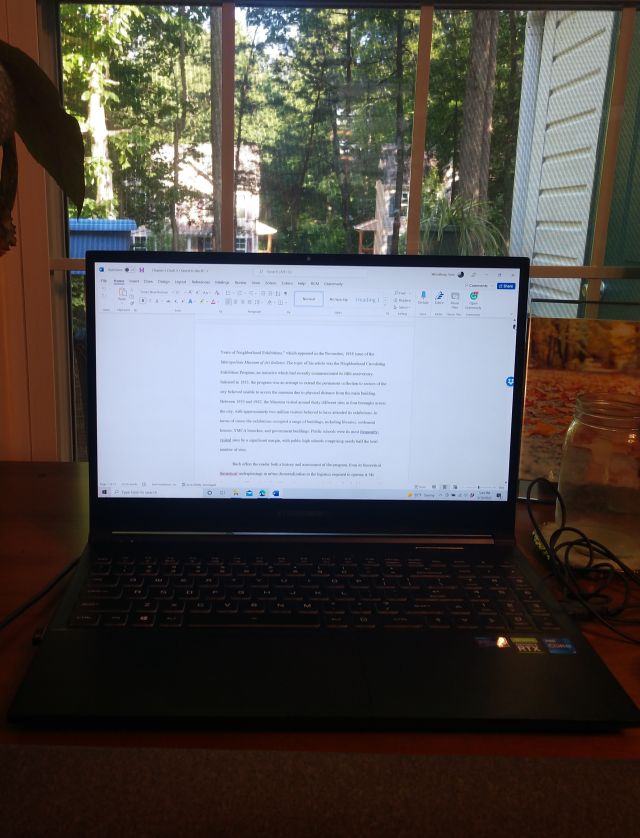Like last month, July’s dissertation update will be divided into two parts, as I’ve been working on two parallel tracks.
Last week I finished my first revision of Chapter 2 and sent it off to my advisor. I had intended on finishing this work before I went to Minneapolis, but the final section required more time and attention than I was able to give at the time. What I ended up writing isn’t the final iteration, but it’s enough to give the draft some sense of coherency until I’m able to do additional research. After all, a dissertation is a process, with chapters getting written and rewritten as you find new information.
The part I needed to contend with was the section dealing with visitors to the Neighborhood Circulating Exhibitions. One of the larger arguments I’ve been making is that it’s important to consider how audiences respond to outreach shows, but archival records don’t always show their individual perspectives. For the Met, the primary means of gauging success for the Neighborhood Circulating Exhibitions was through numbers. So we know how many people attended an exhibition at a given time, but we don’t know about the qualitative aspects of their experience. We don’t know how long they lingered in the show, which pieces they responded to, or how their experiences stayed with them. Unless museums take the time and labor to create an exit survey or other means of assessing the visitor experience, we depend on visitors having the initiative and resources to articulate their reactions in a more permanent fashion. Otherwise, their reactions remain ephemeral, rendered as conversations between visitors and their social circles, or as interior thoughts.

This is what I’ve been encountering with the Met archives for the Neighborhood Circulating Exhibitions. Outside of the occasional thank-you letter from school classes, documents that reinforce the idea of outreach exhibitions being uncomplicatedly good, the archival record doesn’t much direct feedback from the visitors. To be clear, I don’t believe these documents were intentionally omitted. They may be kept somewhere else, or perhaps they never even existed. Rather, the archive offers insight into how museums like the Met prioritize documents, with examples relating directly to the collections often getting preserved first. Just as the Roswell Museum archive reflects primarily a federal perspective, the Met archives are very much institutional repositories in terms of the points of view they reveal.
To start introducing different perspectives, then, I’ve been consulting newspaper articles from the period. Some of these have been preserved as clippings in the archive, others I’ve found through online repositories like Newspapers.com, which I can access for free through William and Mary (one of the many advantages of being at a university is the free access I get to research databases, something I greatly appreciate after years of limited access in Roswell). While these articles don’t provide direct access to visitor opinions, they can offer a different perspective from the museum. It’s especially helpful when these articles mention details about the shows we don’t always see in the museum’s write-ups, such as which objects visitors liked the most.
These articles are also helpful for what they don’t say about the exhibitions. While I was going through mentions of the Met online, for instance, I compared discussions of the Neighborhood Circulating Exhibitions to write-ups about in-house shows, donations, and other museum events. One detail that struck me was the social dimension that accompanies these other articles. The most notable examples I observed were the field trips that women’s clubs and other groups took to the museum. They’ll not only list who organized the trip and what they visited, but will list the names of participants. In short, there’s a social cache that accompanies these visits, not unlike how people might share footage of museum visits on social media today. I didn’t see any articles like these for the Neighborhood Exhibitions though, suggesting that, for women’s clubs and similar groups at least, these exhibitions didn’t carry the same kind of cache as trips to the main building. Since many of these exhibitions were staged in schools, their primary social value would presumably be connected to students rather than women’s clubs.
And this is why my research for this chapter isn’t finished yet. Newspapers offer another perspective, but they don’t track the social lives of schools. That comes from yearbooks, school papers, and other in-house publications. Fortunately for me, some of these appear to have been preserved at the New York Historical Society, which I’ve started perusing through online finding aids. If there’s sufficient material, I’ll look into arranging another research trip in the future.
But that’s for the future. For now, I’ve reached a point where I can hand in an initial revision, and can turn my attention back to the Walker Art Center materials. Stay tuned for another update on that next week.

